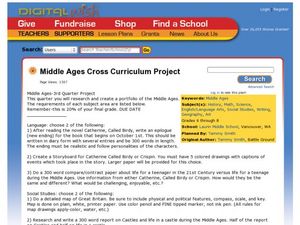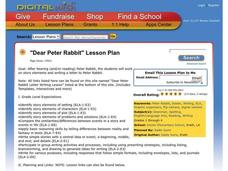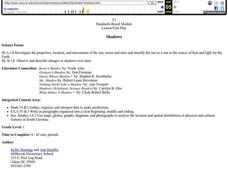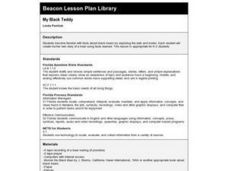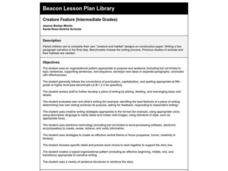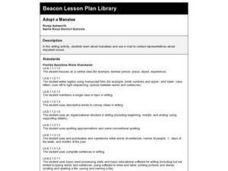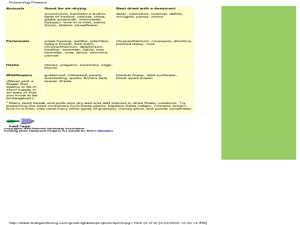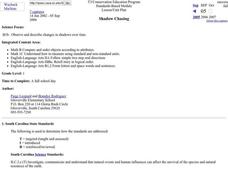Curated OER
Middle Ages Cross Curriculum Project
Middle schoolers complete several projects on the Middle Ages. In this world history lesson, students complete language arts, social studies, math, and science projects. Some of these include: comparing a teenager's life now to that in...
Curated OER
Snow Globe Family
Kindergartners sequence the parts of a story using a snow globe as a setting. They will listen to Snow Globe Family and retell the parts of the story noting the beginning, the middle, and the end. Then they will make their own snow...
Curated OER
Insects
It's a fact: kids love bugs! With this lesson, young learners explore reading informational texts and conducting research while learning about their favorite insects. Spark learners' interest by reading a book about one kind of bug and...
Curated OER
The Very Clumsy Click Beetle
Second graders determine what it means to be clumsy before listening to Eric Carle's, The Very Clumsy Click Beetle. They examine the part where the click beetle does flips before drawing three frames that show the beetle flipping. For...
Curated OER
Little Red Hen
Students thresh wheat. In this comprehension and comparison activity, students read the Little Red Hen and retell the story based on the beginning, middle and end. Students get a wheat stem, predict the number of seeds in their seed...
Curated OER
Dear Peter Rabbit
Write dear old Peter Rabbit a letter with this lesson. First, youngsters listen to the story Peter Rabbit and analyze the story elements. Then they complete a story map graphic organizer in order to write a letter to Peter...
Curated OER
When the Fly Flew In by Lisa Westberg Peters
The students will listen to the story When the Fly Flew In, and be able to identify the main idea of the story and many of the (supporting) details. Students will also develop an appreciation for the humor and illustrations. After...
Curated OER
Drama from Animal Characters
Learn about animal habitats, characteristics, and writing in a different perspective. The class composes a narrative from the perspective of a fresh water animal, they include a problem and the animal's reaction to the problem. The...
Curated OER
Using Imagery To Introduce the Endocrine System
Students listen with closed eyes to a story that starts in a relaxed tone and ends in a scream. They list the body reactions they experience: fast heart rate, shaking, etc. and hypothesize the reason for the reactions. They explore the...
Curated OER
What is the Evidence for Evolution?
Students identify one object that would tell the story of their lives. In groups, they determine what can and cannot be told from objects left behind. After watching a video, they compare and contrast chicken bones to human bones. To...
Curated OER
Bird Stories: Fact or Fiction
Students evaluate/distinguish scientific fact from fiction. They discuss similarities and differences in the life cycles of various birds. Student use the Internet as a research tool.
Curated OER
My Owl Babies Miss Momma
Students investigate the relationship between children and parents by reading a book about owls. In this story analysis lesson plan, students read the book Owl Babies and participate in a role play based on one of the characters....
Curated OER
Cleaning Up
Students demonstrate how to be a philanthropist. In this philanthropy lesson, students read the story The Wartville Wizard and discuss ways to become a philanthropist. Students participate in a good deed by volunteering to clean up trash.
Curated OER
Shadows
First graders measure how a shadow changes over the course of a day. They write about what they would do if they lost their shadow, and make silhouettes of themselves. Students make up a shadow dance and read stories about shadows.
Curated OER
My Black Teddy
Students read "Bonnie the Black Bear"and discuss black bear facts. In teams, they research the internet about black bears. They create their own stories about black bears using three facts from the information they've researched.
Alabama Learning Exchange
Presenting the Water Cycle
Third graders complete a unit of study about the water cycle using both print and Internet based resources. They examine fresh and salt water and complete an online quiz before developing a multimedia presentation highlighting the phases...
Curated OER
Creature Feature
Students work in pairs to create a creature and its habitat out of construction paper. Then students write a narrative to describe the animal and its habitat.
Curated OER
Animal: Unique Creatures With Great Features
Students present models, oral reports, and presentations on animal's characteristics. They research various animals and the characteristics that link them to specific animal groups. They answer specific questions relating to animals in...
Curated OER
Halloween Literature Unit: Pumpkin Patch Unit Project
Students simulate an agriculture project. In this sequencing lesson, students observe their classroom pumpkin patch, make journal entries, and predict how the pumpkins will grow. They discuss as a class how to keep their pumpkins safe...
Curated OER
Is This a House for Hermit Crab?
First graders identify text that uses sequence or other logical order. They identify and interpret how different plants and animals inhabit different kinds of environments and have external features that help them thrive in different...
Curated OER
Harvest Happenings
Young scholars explore the history of agriculture and develop a personal connection to agriculture. Students investigate how farming practices have evolved through the years and create poetry relating to harvest.
Curated OER
Adopt a Manatee
First graders engage in a writing activity about manatees and use e-mail to contact representatives about important issues. This would be a very exciting, and meaningful lesson plan for a first grade writer!
Curated OER
Preserving Buds and Blooms
Learners learn how to preserve flower buds and blooms. In this gardening lesson, students explore the methods of air drying, using drying agents, and pressing plants to preserve them.
Curated OER
Shadow Chasing
First graders observe and measure their shadows. They go outside at three hour increments during the course of a day. Each time students measure and record the length of their shadows. Students read books about shadows and discuss why...
